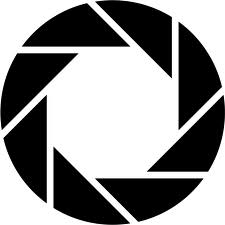|
Aperture and f-numbers:
The aperture is just a hole whose size can be varied to allow more or less light to pass through it. The size of apertures is expressed in f-numbers. You can calculate an f-number, if you are keen or don't have much of a life, by dividing the lens focal length by the diameter of the aperture. The range of f-numbers follows a standard sequence with each f-number being half as bright, passing half as much light, as the previous one. A typical aperture range may look like this:
f 1.4; f 2; f 2.8; f 4; f5.6; f 8; f 11; f 16; f 22; f 32
There are smaller and larger f-numbers but the actual numbers used are always the same and will maintain a constant value over different lens focal lengths. This just means that f-8, for instance, will always pass the same amount of light no matter what camera or lens you may be using. Similarly, f-16 will pass half as much light as f-11 and f-4 will pass twice as much as f-5.6. The difference in value between one full f-number and the next is known as a 'stop'. If you change aperture from f-8 to f-5.6 you will give your film one stop more exposure.
The smaller the f-number is then the larger the aperture is and the more light it will pass. The f-number is also used as a guide to the light gathering abilities of a lens. Lenses with large maximum apertures (small f-number) are described as being 'fast'.
Generally the aperture will always be held open at its maximum irrespective of whatever value you may have set it to and will not actually close down until the moment of exposure. The main reason for this is to produce the brightest image possible onto the focusing screen. To see the aperture in operation you will have to remove the lens, unless you have a preview control, and look through the lens while turning the aperture control ring.
|


